Private aerospace firm Metrea has made a major move to expand its contractor-owned and operated aerial refueling business with the purchase of 14 KC-135 tankers from the French Air and Space Force. The company plans to have the first of these aircraft flying under its banner within weeks as it eyes major new opportunities with the U.S. military and foreign armed forces.
The French Air and Space Force transferred ownership of 11 KC-135FR tankers to Metrea on June 26, according to a company press release. Three more KC-135RG versions will be formally turned over at a date still to be determined. The deal, the value of which has not been disclosed so far, also includes underwing probe-and-droge refueling pods for each of the aircraft and ancillary items. Metrea currently operates four KC-135Rs it previously acquired from the Republic of Singapore Air Force and the company is already on contract with the U.S. Navy.

The new acquisitions make Metrea’s tanker fleet by far the largest in private hands and also now boasts of owning more aerial refueling aircraft than all but four air forces worldwide. Omega Air Ruefling, the other major private company currently in this market space, has five tankers, two KC-707s and three KDC-10s (two of which previously belonged to the Dutch Air Force).
“Metrea is appreciative of the efforts of the French Air and Space Force and the French government to facilitate the transaction and make a bold move to transfer the assets to a commercial provider,” Jon “Ty” Thomas, head of Metrea’s Air and Space Group, told The War Zone in an interview this week. “Also we’re very appreciative of the State Department and their efforts to facilitate the third party transfer process. It’s not an easy or simple process, but that team there at State worked hard and stayed with it, and we got it done.”
France’s air arm first began flying KC-135Fs in 1964. Those aircraft received new CFM56 turbofans in the late 1980s and were redesigned KC-135FRs. The French also later acquired three KC-135Rs second-hand from the U.S. Air Force, which were then upgraded to the RG standard with improved avionics and other equipment in the 2010s.
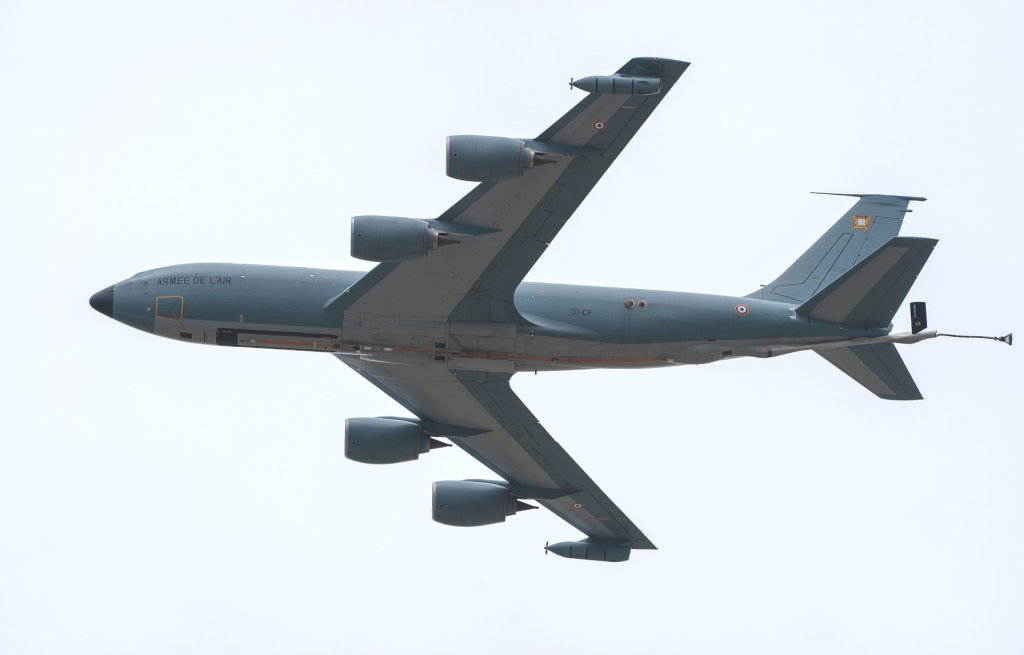
Metrea’s Thomas told The War Zone that France’s former KC-135s, which the country has steadily been replacing in recent years with new Airbus A330 Multi-Role Tanker Transports (MRTT), have been maintained in a status similar to the U.S. Air Force’s Type 1000 storage requirements. In Air Force parlance, aircraft in Type 1000 storage are kept in a state where they could be returned to operational duty relatively quickly.
The French KC-135s, which are currently at Nimes Air Base in the southern end of the country, will still require varying degrees of maintenance before Metrea can put them to use. The company hopes to get the first one of these tankers back into service within between 30 and 45 days and a second one flying again actively before the end of the year.
Two more of the ex-French KC-135s, which require deeper maintenance, are set to start flying aerial refueling missions for Metrea by the end of the second quarter of 2025.
The age of the French KC-135s, a design that has been out of production for decades and is in declining use worldwide, could raise questions about operating and sustainment complexities and costs. Metrea sees other inherent benefits of using the proven tankers, which are configured to refuel any existing receiver aircraft via either the boom or probe-and-drogue methods, as can be seen in the French Air and Space Force video below, as outweighing any such concerns.

“From the perspective of a receiver, whether it’s a U.S. military receiver, or a NATO or an… otherwise allied receiver aircraft, if they find themselves in a position where they need help from the United States… and it includes help in terms of air refueling, what is the most likely tanker that’s going to pull out there in front of their receiver? It’s gonna be a KC-135. Why? Because the vast majority of tankers in the USAF inventory still remain KC-135s. And will even for probably the next 10 years or so.”
Thomas is also a retired U.S. Air Force lieutenant general whose last posting was as deputy head of Pacific Air Forces (PACAF) and was the number two officer in charge of Air Mobility Command (AMC) before that. AMC currently provides the bulk of air refueling support across the U.S. military, as well as to allies and partners during coalition operations and combined training events, primarily with a mixture of KC-135, KC-10, and KC-46 tankers. The entire KC-10 fleet is in the process of being retired, which raises separate questions about whether private contractors like Metrea might seek to acquire those aircraft, as well.
However, plans for replacing the KC-135s, some 365 of which are still in Air Force service today, are in flux. Current orders for KC-46s, tankers that continue to be plagued by technical and supply chain problems, will not be sufficient to replace the remaining KC-135s on a one-for-one basis. The Air Force is also hoping to field much more advanced and survivable tankers no later than 2040, as well as other new aerial refueling capabilities, through its Next Generation Air-refueling System (NGAS) effort. The Air Force is also looking into adding novel capabilities, including the ability to launch drone swarms, making other upgrades to its KC-135s in the interim.

“So if you want to be trained and ready to get fuel … at night, in the weather, behind a KC-135, you probably want to train behind a KC-135,” Thomas continued. “So that’s, I think a really important thing that is worth identifying is us having KC 135s… makes them [trained recievers] more combat ready when the time comes in a contingency.”
Given the size of the Air Force’s KC-135 inventory alone, there continues to be a significant support structure for sustaining those aircraft, too.
“Even though it’s still hard in the ecosystem for the KC-135 to get components, it’s still a large ecosystem,” Thomas pointed out. “The USAF fleet drives a certain set of requirements for suppliers.”
In addition, “there is a large force of aircrew and… maintainers that are familiar with the airplane, … and maybe we can bring them into our workforce. It’s notable that a good portion of our [current] crew members that fly for Metrea are also Guardsmen and Reservists in the U.S. Air Force,” he added. “And so they come to us fully trained, qualified, experienced in the aircraft. And oh, by the way, that ecosystem and that crew force and that maintenance force [is] likely to exist for at least the next 20 years.”
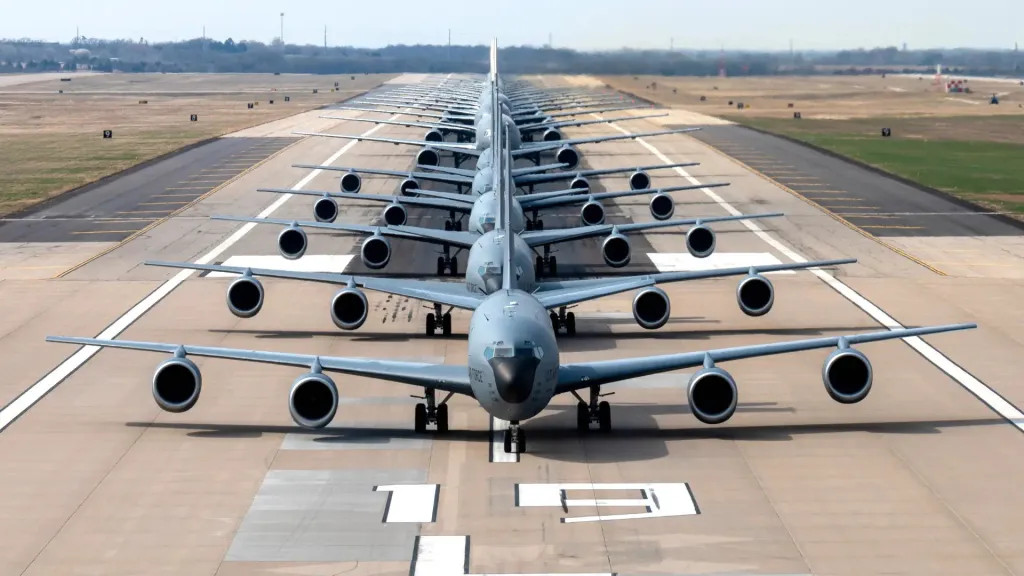
“So we have very deliberately chosen the KC-135 as our platform of choice for all those reasons…. we chose the [KC-]135 and it’s working despite how old it is.”
Metrea’s existing KC-135Rs have “a mission reliability rate of 93% since beginning execution of a NAVAIR contract in late 2021,” according to the company’s press release. “The combined Metrea aviation units have flown over 130,000 hours, across multiple aircraft types, missions, and geographies.”
The company’s work to date includes milestones like the first use of a contractor-owned and operated tanker to refuel an aircraft via boom, the first commercial aerial refueling of any U.S. Air Force aircraft, and the first-ever use of a private tanker to refuel Air Force tactical combat jets (A-10 Warthogs) in April, June, and October 2023, respectively.
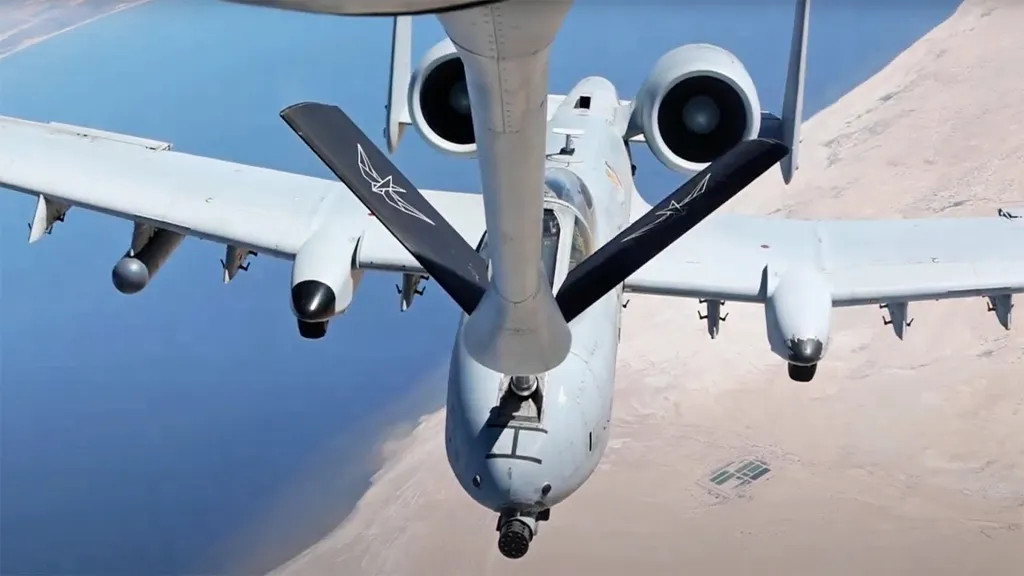
Regardless, it does remains to be seen how many of the French KC-135 will ultimately fly again actively for the company. “Our return to service plan is based on customer demand, and, so, we have some known demand signals,” according to Thomas.
The major demand signal now is from the U.S. military, which Metrea is already on contract with via Naval Air Systems Command (NAVAIR), as already noted. The company says it is scheduled to fly more aerial refueling hours this year than last year under that deal and expects to see a similar increase in 2025. Metrea has already been refueling U.S. Air Force aircraft through the NAVAIR contract, but is now looking toward more direct opportunities with the USAF.
U.S. military officials routinely complain now about shortages in tanker capacity and those demands would only grow substantially in the event of any future high-end conflict, especially one against China in the Pacific. As The War Zone has highlighted for years now, contract aerial refueling services, even just limited to supporting non-combat activities like routine movements, training exercises, and test and evaluation efforts, present a clear way to help reduce strain on existing tanker fleets.
The increasing introduction of uncrewed aircraft across the U.S. military is unlikely to reduce demand for aerial refueling support and could well have the opposite impact. Air Force officials have publicly talked about the potential for some of the service’s future Collaborative Comabt Aircraft (CCA) drones to have aerial refueling capability. This could have implications for private contractors even just when it comes to research and development and test and evaluation activities. Omega Air Refueling very prominently supported U.S. Navy testing of a pair of X-47B experimental uncrewed combat air vehicles (UCAV) in the 2010s.
“We are paying close attention to the progress on aerial refueling of uncrewed aircraft, but don’t have anything we can publicly talk about right now,” Metrea told The War Zone today in a statement.

“Our niche is not to like, take over… the USAF refueling requirements. We’re never going to reach that scale. But what we are able to do is fill in the unserved or underserved markets,” Metrea’s Thomas explained. “Just within the U.S. military, despite the fact that they’ve got over 450 tankers, there are still receivers that don’t get their requirements met on a daily basis.”
“A portion of the reason for that is they’ve [the Air Force] got a lot of machines [tankers], but two-thirds of their tanker crew force is in the [Air National] Guard and [Air Force] Reserve. And so they’re not always available on every single day,” he added. “So, we’re filling in the gaps and seams, so to speak, for the U.S. military in particular.”
“Metrea is not going to be out there in the Western Pacific in a high-end war fight doing air refueling,” he stressed. “What we might do is we might backfill some of the things that are done in the CONUS [continenal United States] that then enable … U.S. military tankers to go further forward, and be used in places where only… national assets can be used. So that’s the role. We play an augmented role.”
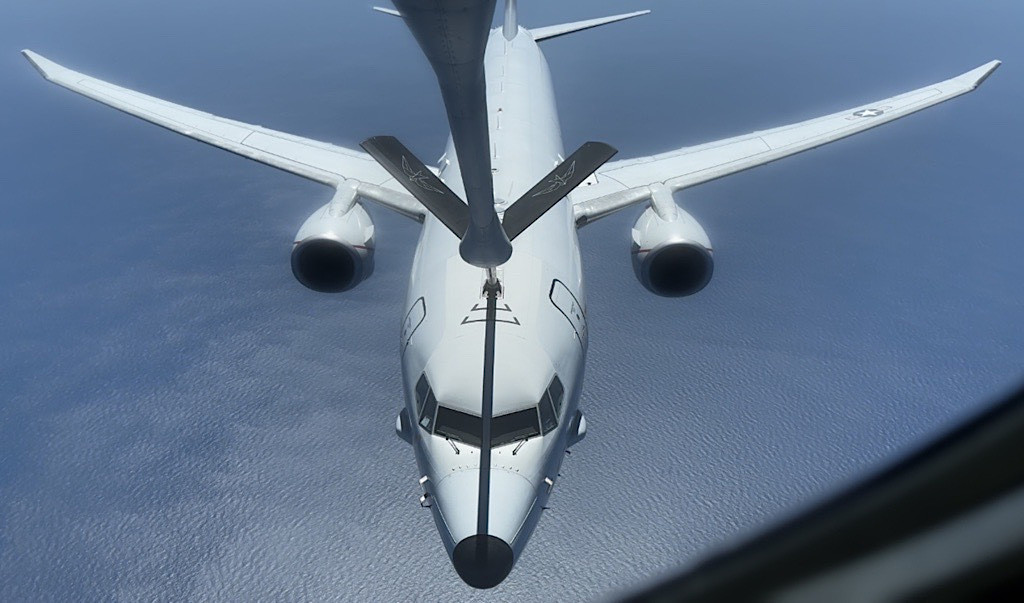
Metrea also has eyes on new opportunities with foreign air forces. The existing NAVAIR contract already allows qualifying U.S. allies and partners to get access to the company’s private tanker fleets via the Foreign Military Sales process. Metrea KC-135s have helped with the movement of Candian CF-18 Hornets and unspecified British military aircraft. The company is scheduled to provide aerial refueling support to unnamed European NATO member aircraft later this year, as well.
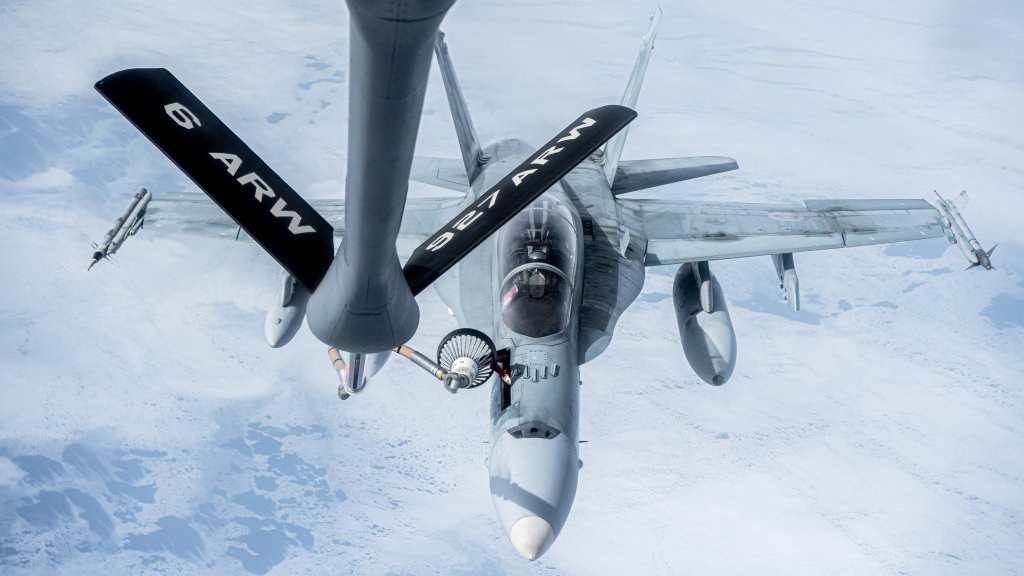
Direct commercial sales opportunities with foreign air forces are on the horizon now, too.
That “would look like a foreign Air Force that either doesn’t have an organic tanker fleet of their own or has an organic tanker fleet that is not sufficiently meeting their own requirements, and they may not have the resources or the ability to buy new tankers elsewhere. And they’ve come to the conclusion that a equivalent of a lease relationship arrangement with us … as a commercially owned, commercially operated tanker provider is their best solution,” Thomas said.
“And I’ll tell you, we’ve got somebody who’s decided that’s the case,” he added, but declined to name the country in question. “We will continue to own the [tanker] aircraft, we will provide the crews, we will provide the maintainers. And we will do it in their country. And it will be subject to some of their specific rules on military flying and things of that nature.”
Thomas noted that Metrea’s general hope is that customers will decide to make use of its aerial refueling services over the long term, but that the company is also happy to help fill the gap until an air force can expand its own organic capacity if that’s the requirement. The clear expectation is that demand for aerial refueling support, no matter who provides it, will only continue to grow around the world.
“We’re careful, we’re very deliberate at Metrea. It might look from the outside that we’d taken an incredible amount of risk when we bought those four Singapore tankers before we were on contract with the Navy,” Metrea’s Thomas noted. “But we were very deliberate about the choices that we made. And the same thing applies here to the acquisition of the French fleet. We’re comfortable with the risks that we’ve taken. And we’ll do the same thing in the future. But we’re not afraid to go for it if it all makes sense to us.”
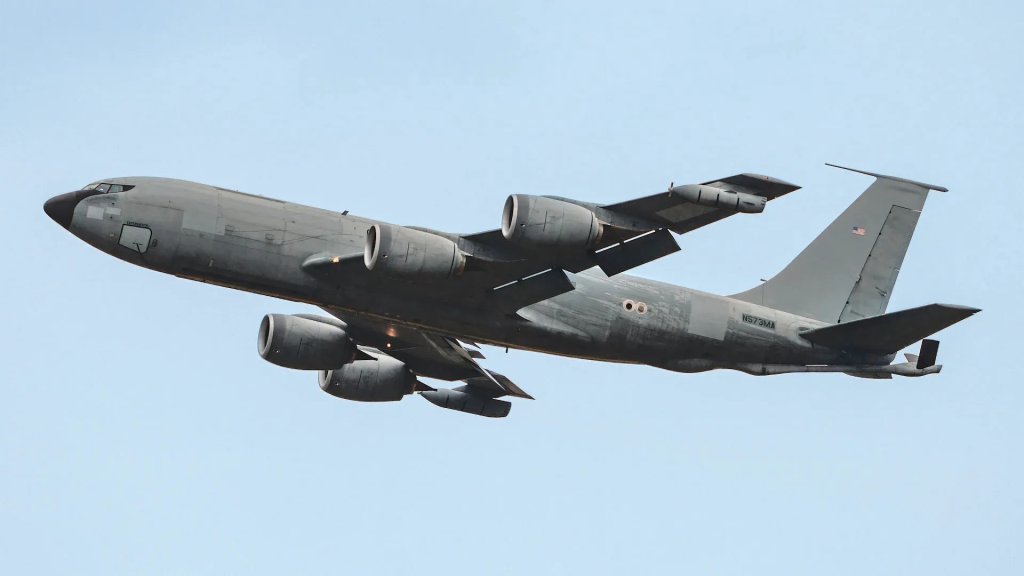
“What we’ve seen is that the first and perhaps the biggest barrier is just getting people to understand how commercial air refueling works [and] how it is accessible to them,” he added. “Air forces that choose to leverage commercial air refueling come out the other side more ready, more capable, and more informed about whatever path they want to choose going forward about having an organic national fleet or just continuing to stay with commercial refueling.”
It’s a “big win-win” for everyone, he continued.
With its acquisition of France’s KC-135 fleet, Metrea is now working to at least double its tanker capacity, with additional room for rapid growth, amid already growing demand for contractor aerial refueling services.
Contact the author: joe@twz.com
